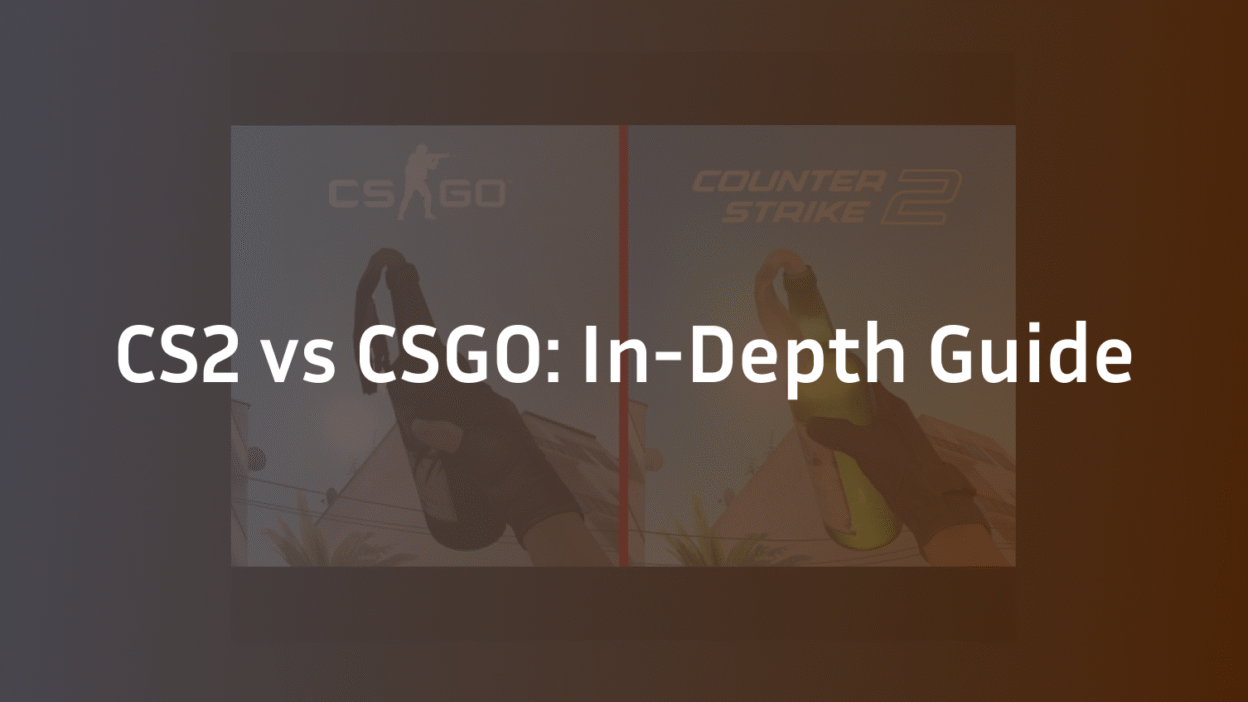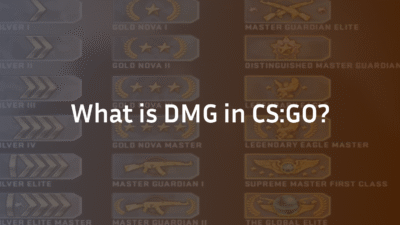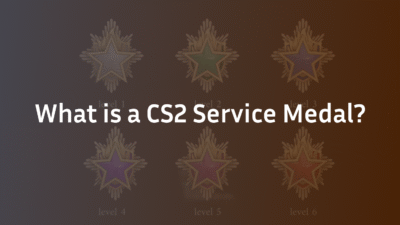CS2 vs CSGO: The Ultimate Technical and Gameplay Comparison
The transition from CS:GO to Counter-Strike 2 (CS2) was more than a simple update; it was a fundamental evolution. For veterans and newcomers alike, understanding the differences between CS2 vs CSGO is crucial to adapting your gameplay and optimizing your setup. This guide moves beyond surface-level observations to deliver an expert, technical breakdown of the engine upgrade, gameplay mechanics, and performance changes that define the new era of Counter-Strike. We’ll cut through the hype to give you a clear, authoritative analysis of what truly changed.
The Foundation: A Ground-Up Engine Upgrade from Source to Source 2
The single most significant difference in the CS2 vs CSGO debate is the underlying technology. CS:GO ran on the aging Source engine, while CS2 is built on Valve’s modern Source 2 platform.
This isn’t just a fresh coat of paint. The Source 2 engine overhaul impacts every aspect of the game:
- Lighting: A new physically-based rendering system creates incredibly realistic lighting and visuals. Light behaves as it would in the real world, changing how angles and shadows appear on every map.
- Visuals: Every asset, from weapon models to environmental textures, has been rebuilt. The result is a dramatic increase in texture detail, VFX quality, and overall visuals saturation that makes CS:GO look dated by comparison.
- Performance: The new engine upgrade is designed to be more efficient, potentially offering a better frame rate on modern hardware. However, its new features also increase hardware demands, a critical point we’ll explore in the performance section.
This architectural shift is the reason for every change that follows, from the way smokes behave to how your shots are registered.
Gameplay Revolution: Sub-Tick, Movement, and Gunplay Feel
This is where the CS2 vs CSGO debate gets intense. The core feel of the game has been altered, demanding adaptation from every player.
The Sub-Tick System: Rethinking Responsiveness
CS:GO relied on a tick rate (64 or 128) that dictated how often the server updated the game state. CS2 introduces the sub-tick system, which is arguably the most profound change. This architecture allows the server to know the exact instant you fired your shot or jumped, regardless of the server’s update frequency.
The result? A significant reduction in input lag and a feeling of unparalleled smoothness and responsiveness when shooting. Your actions are registered with microscopic precision, theoretically making the game fairer. However, this new netcode can feel different and has its own nuances concerning peeker’s advantage.
Weapon Handling and Recoil Control
The gunplay feels familiar but notably different. Many players report changes to recoil control and spraying randomness. While the spray patterns are largely the same, the visual feedback and weapon animation quality make controlling them feel distinct. The sound design also plays a role; improved audio clarity and more distinct footsteps sound provide better spatial awareness, impacting tactical decisions.
Mastering these new sensations is key to ranking up in the new CS2 Premier mode.
Visual and Audio Overhaul: A Modern Competitive Experience
Valve didn’t just improve visuals; they designed them to provide better competitive information.
Map Redesigns and Volumetric Smokes
Every map has received significant map updates. Some, like Overpass and Nuke, received map layout tweaks, while others, like Dust II, got a visual facelift. The most revolutionary change is the introduction of volumetric smokes.
Unlike CS:GO’s static smoke sprites, CS2’s smokes are dynamic 3D objects. They interact with the environment: they react to lighting, can be pierced by bullets, and are dispersed by grenades. This dynamic smoke mechanics change adds a deep new layer of tactical depth to utility usage, completely altering executes and retakes. Learning these new interactions is as important as knowing your Mirage callouts. You can practice these in a controlled environment using specific CS2 smoke practice commands.
UI and HUD Improvements
The UI improvements are vast. The buy menu is now a translucent overlay that doesn’t pause the game, allowing for faster buys, especially if you use CS2 buy binds. The economy UI is clearer, showing your team’s money at a glance. The visual feedback for dealing damage is more pronounced, and the overall HUD is cleaner and more informative, reducing clutter during intense moments.
Performance and System Requirements: Is CS2 Harder to Run?
The CS2 vs CSGO performance discussion is critical. The more advanced Source 2 graphics come with increased hardware demands.
- GPU Bound: CS2 is more demanding on your graphics card due to enhanced texture quality, shadows, dynamic shadows, ambient occlusion, and reflections.
- CPU Changes: The sub-tick system shifts some calculation load from the server to your CPU. This means your processor is more important than ever for maintaining a high, stable frame rate.
- Common Issues: Some players experienced stuttering and rubber-banding at launch. While many issues have been patched, optimizing your settings is crucial. Ensuring a stable connection is also vital; sometimes, problems like being Unable to Establish Connection with Game Server CS2 can be misdiagnosed as performance hiccups.
For most players, achieving a smooth experience will require tweaking settings more than it did in CS:GO. Understanding your CS2 audio settings can also free up significant CPU resources.
The Competitive Landscape: New Modes and Meta Shifts
CS2 isn’t just a visual upgrade; it’s a restructuring of the competitive ecosystem.
The introduction of the Premier mode is now the definitive ranked experience, replacing the old map-specific ranking system. This mode uses a pick/ban system and a visible numerical rating (CS Rating), aligning more closely with professional play. Understanding the CS2 ranks and how the CS2 weekly reset works is essential for the serious competitor.
The combination of new smokes, slightly altered movement feel, and precise sub-tick shooting has undoubtedly influenced the pro-play impact and the competitive balance. The game maintains its core strategic identity but rewards adaptability and a deep understanding of its new mechanical nuances. Many pros have adapted their setups; you can find configs like s1mple’s CS2 settings or ZywOo’s CS2 settings to see how the best in the game have configured their new experience.
Conclusion: Evolution, Not Revolution
The CS2 vs CSGO comparison ultimately reveals a game that has been meticulously modernized. CS2 is not a different game; it is the core Counter-Strike experience refined and enhanced for a new generation. The Source 2 engine provides a foundation for years of future growth, while gameplay changes like the sub-tick system and volumetric smokes add welcome layers of depth and fairness.
The transition requires adaptation. Your old CS:GO settings might need tweaking, your utility throws will need practice, and your hardware may need an upgrade. But for those willing to learn, CS2 offers a more responsive, visually clear, and tactically rich competitive shooter.
Ready to dive in? Start by mastering the new Overpass callouts, optimizing your CS2 settings like a pro, and learning how to use the new dynamic smoke mechanics to your advantage. The next level of play awaits.
FAQ Section
H3: Is CS2 more CPU or GPU intensive? CS2 is more demanding on both components compared to CS:GO, but it places a significantly higher load on the GPU due to its advanced Source 2 graphics features like improved lighting and textures. However, the new sub-tick system also makes the game more CPU-intensive than before, as your processor now handles more precise calculation of actions between server ticks.
H3: Does CS2 have a better tick rate than CS:GO? CS2 uses a new architecture called the “sub-tick system,” which is different from the traditional tick rate model. While the server still operates on a tick rate, the sub-tick system allows the server to know the exact moment of your actions (like shooting or moving) with much higher precision than CS:GO’s 64-tick or 128-tick servers, leading to improved responsiveness. You can read our full guide on CS2 Tick Rate & Sub-Tick for a deeper explanation.
H3: Are CS:GO skins transferred to CS2? Yes, absolutely. All your CS:GO inventory, including skins, knives, gloves, and stickers, were automatically transferred to CS2. They benefit from the new engine’s lighting and materials, often making them look even better. You can inspect them in their full glory using a CS2 inspect link.
H3: Why does my movement feel different in CS2? The movement feel is different due to the combination of the sub-tick system updating your actions more precisely and subtle changes to player acceleration and deceleration. The updated animation quality also contributes to a different visual perception of movement. It’s a common observation that requires a short period of adjustment for veterans. Some players use a jump throw bind to adapt utility usage to the new feel.
H3: Can I still play CS:GO instead of CS2? No. Counter-Strike 2 has completely replaced CS:GO on Steam. The original game is no longer available, as CS2 is considered its free replacement and natural evolution.
H3: Was Danger Zone removed in CS2? Yes, the Danger Zone battle royale mode was not available at CS2’s launch and remains absent from the game. Valve has not announced any plans for its return, focusing development efforts on the core competitive experience. Our guide answers the question: Is The Battle Royale Mode Gone Forever?



